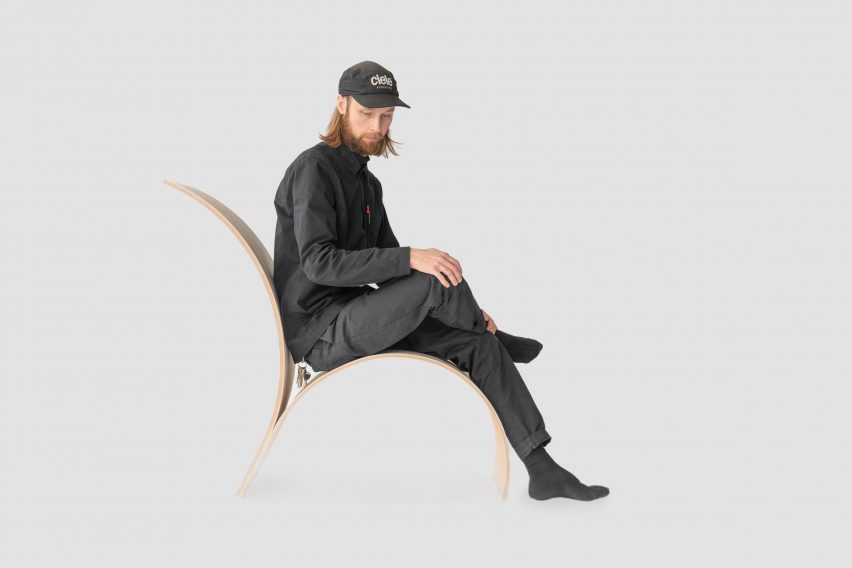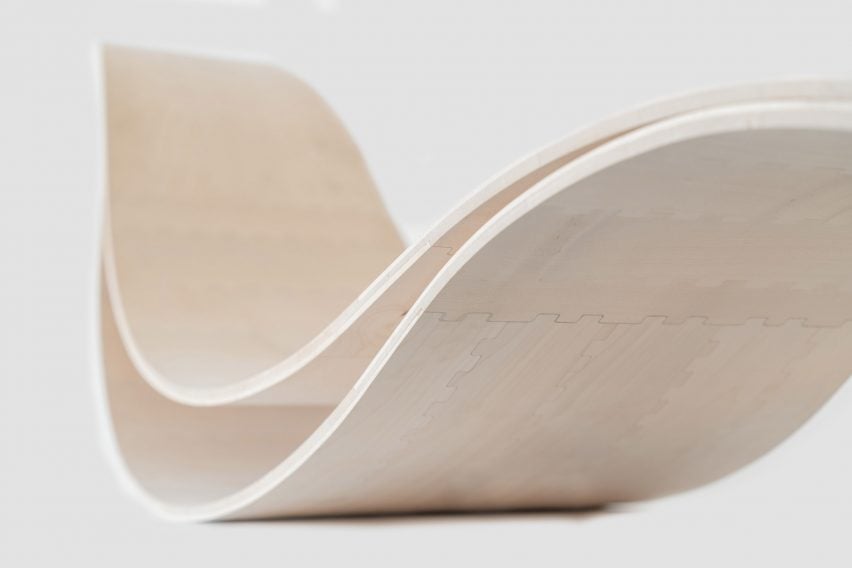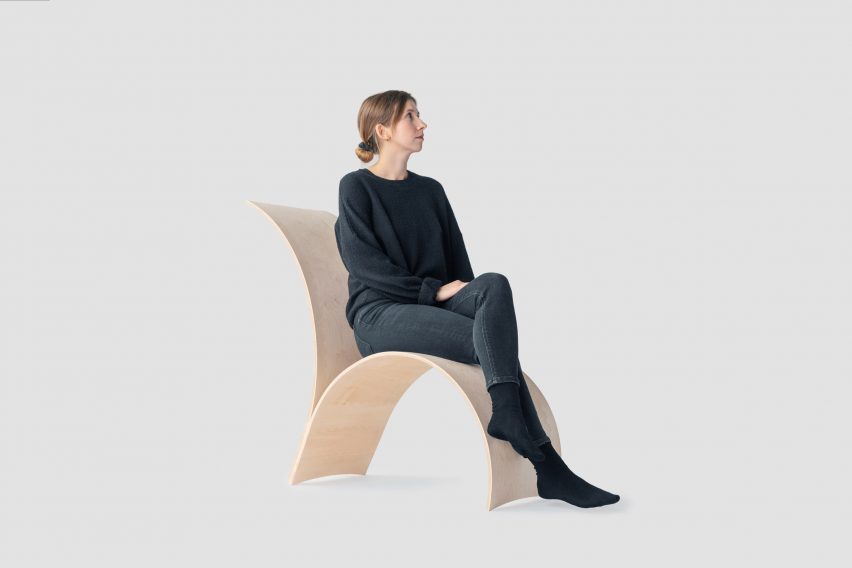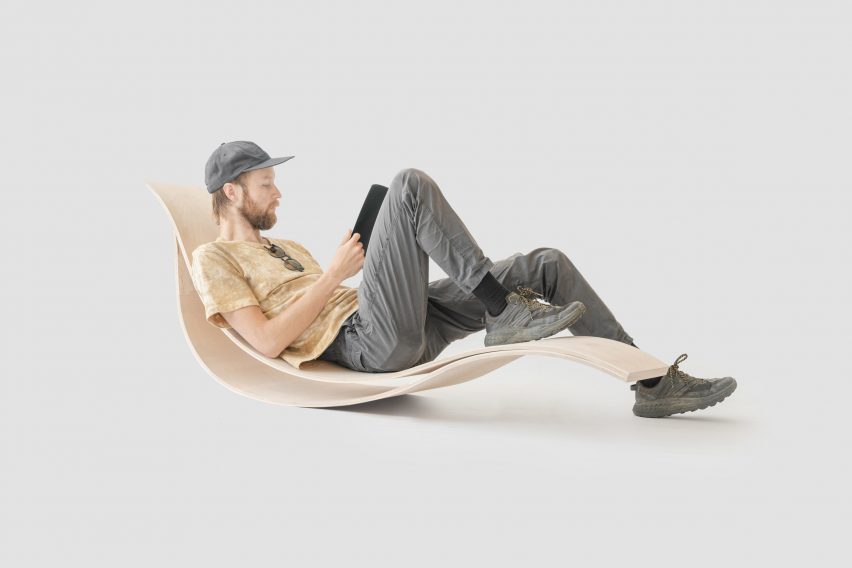Flat-pack wood furniture uses "nature-powered shaping" to self assemble
The Institute for Computational Design and Construction (ICD) at the University of Stuttgart has released prototypes for self-forming wood furniture that requires no assembly.
The HygroShape furniture is delivered as flat boards, then curves into shape when unpackaged using only the natural properties of wood.
The mono-material wood construction allows for simple forms, with minimal human intervention required during assembly.
ICD's designs rely on hygroscopic shrinkage, a property of wood that involves cell walls expanding or contracting based on the amount of water present.

A familiar "biomimetic" example can be seen in pine cones, which, after falling from the tree, dry out and curve upwards to release their seeds.
The process for creating HygroShape utilises computer programming to gauge the cellular properties that control how the wood will shrink. Calculations are then used to control the furniture's eventual form.

"If obtained directly, the wood can be processed and prepared in a way to maintain and optimise high moisture content during cutting, and organisational steps informed by a digitisation of the natural structuring," explained ICD in a design statement.
Based on the computer model, the moisture-filled wood is layered in specific configurations that result in the eventual ergonomic shaping of the dried furniture.

Once unpacked, the items are exposed to average indoor atmospheres and begins to dry out, allowing the furniture to take shape as quickly as overnight.
"By basing the process on understanding and directing the behaviors of natural materials, rather than breaking them down or engineering from scratch, the process opens the door to resource and manufacturing efficiency," said ICD.

The impact of the design is based on the trends of flat-pack consumer furniture that requires assembly at home. Flat packs for the HygroShape furniture are only about three centimetres thick, but turn into furniture with a height of 50 centimetres – a 30-fold increase in volume.
The current prototypes designed at the University of Stuttgart include H1 and H2.
H1 is a lounge chair designed for back support. Two linked surfaces allow it to stand up almost straight from the flat configuration.
H2 is a chaise lounge rocker that has two layers that lock into one another when dry. This creates a single axis on which a sitter can rock back and forth with their feet raised.

Both designs use quarter-sawn European maple arranged in two-ply layups.
From these prototypes, a spin-off company called Hylo Tech has been formed to continue research into began in the design program.
Other recent experimental material technologies that could transform architecture and design production include hemp rebar and a polystyrene substitute made from plastic-eating mealworms – see Dezeen's round-up of 10 new materials that could change the way we build.
Images are courtesy of University of Stuttgart.
Project credits:
Design team: Dylan Wood, Laura Kiesewetter, Achim Menges
Scientific collaborators: Markus Rüggeberg, Philippe Grönquist